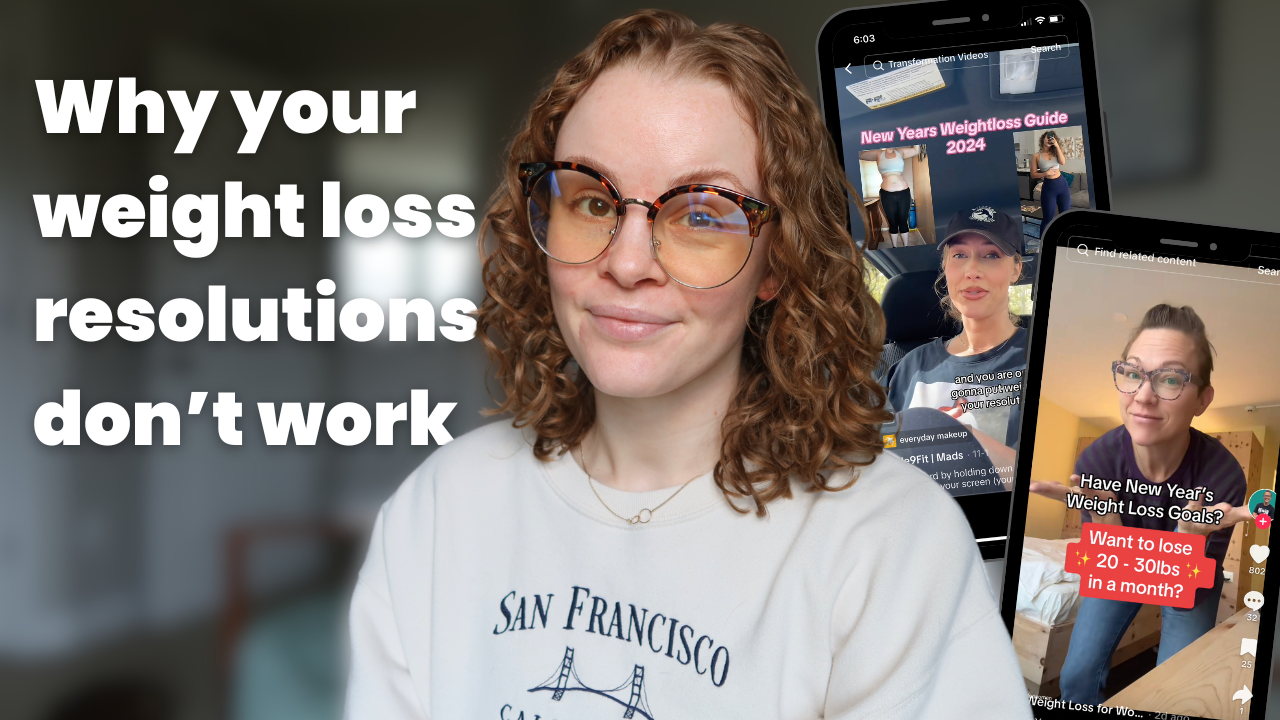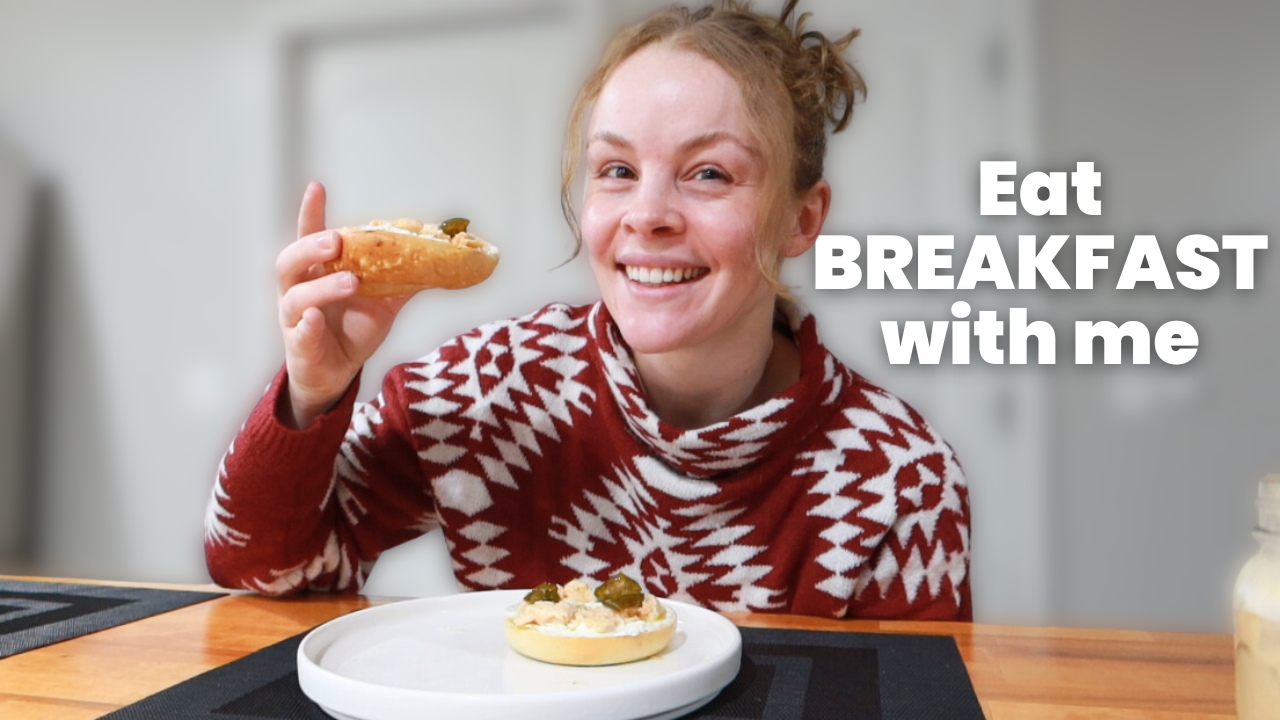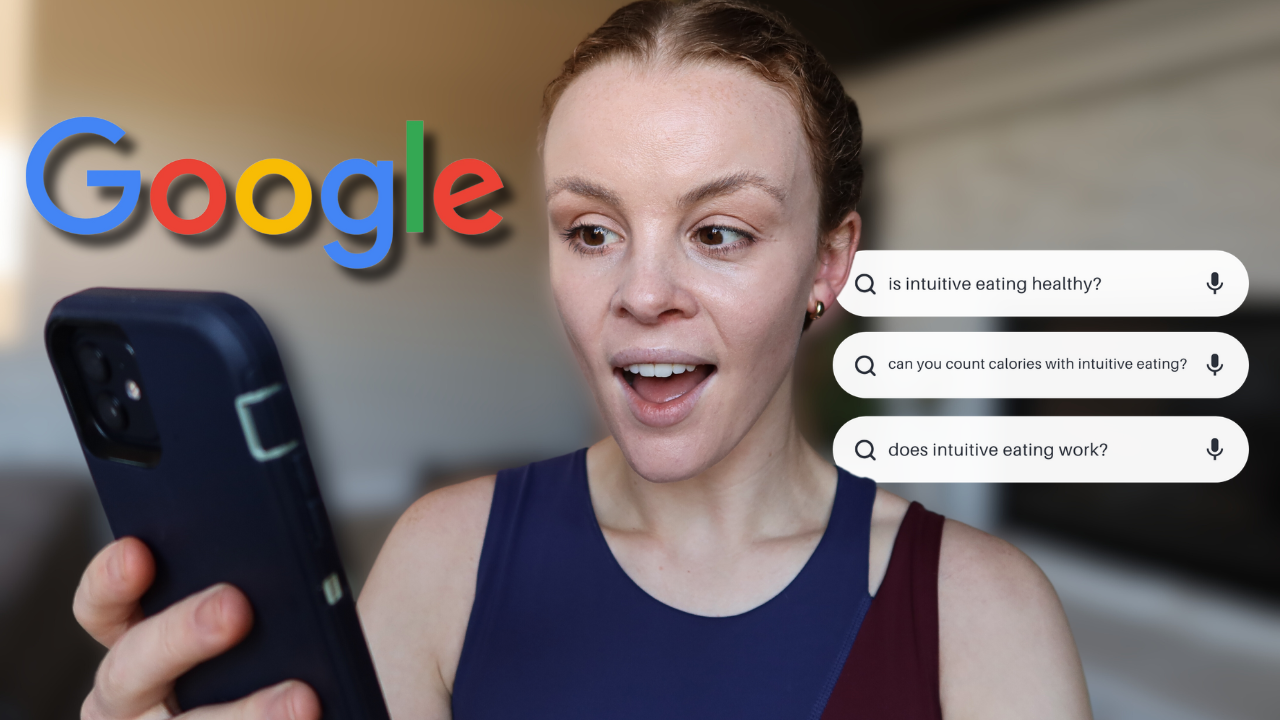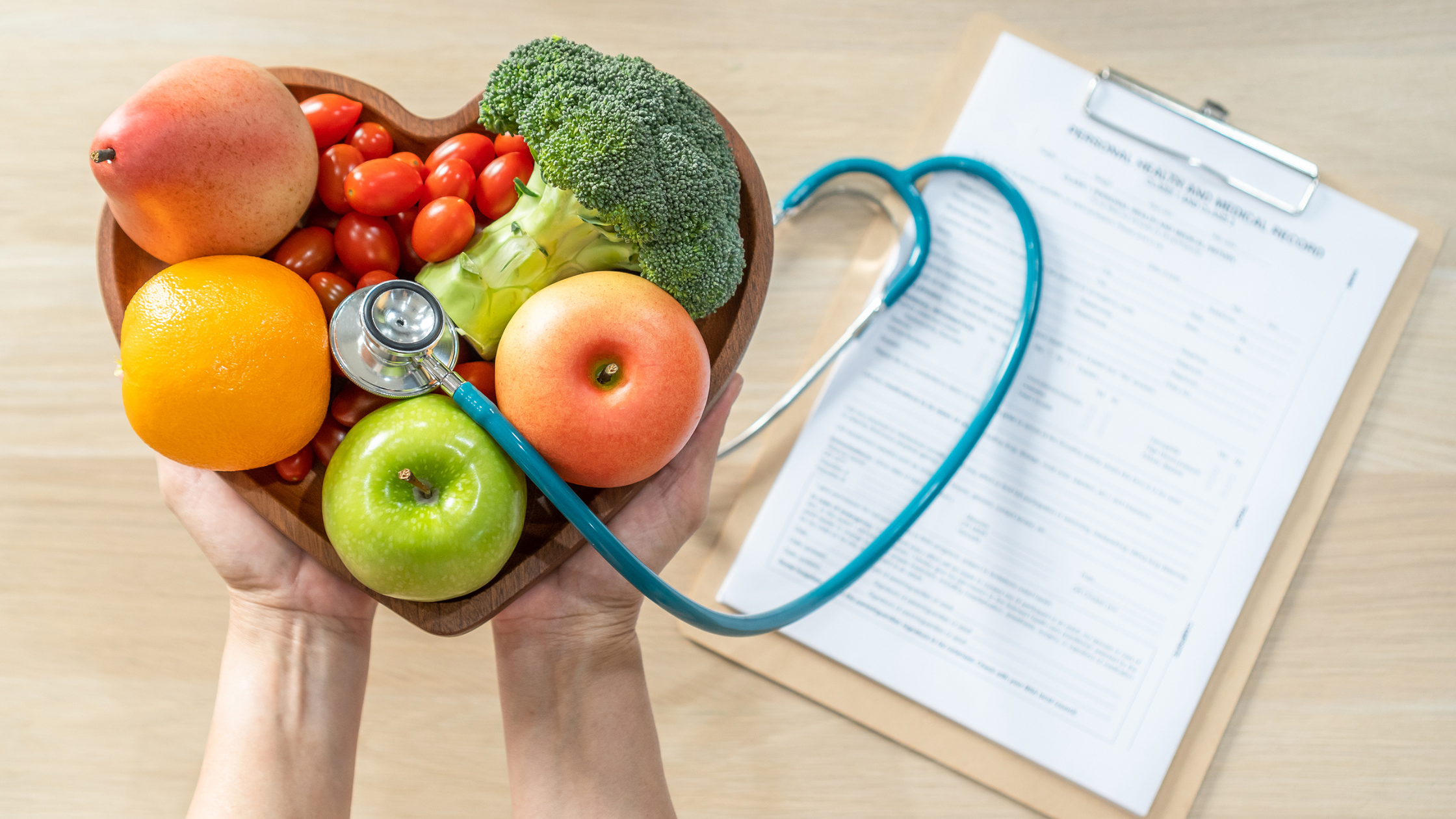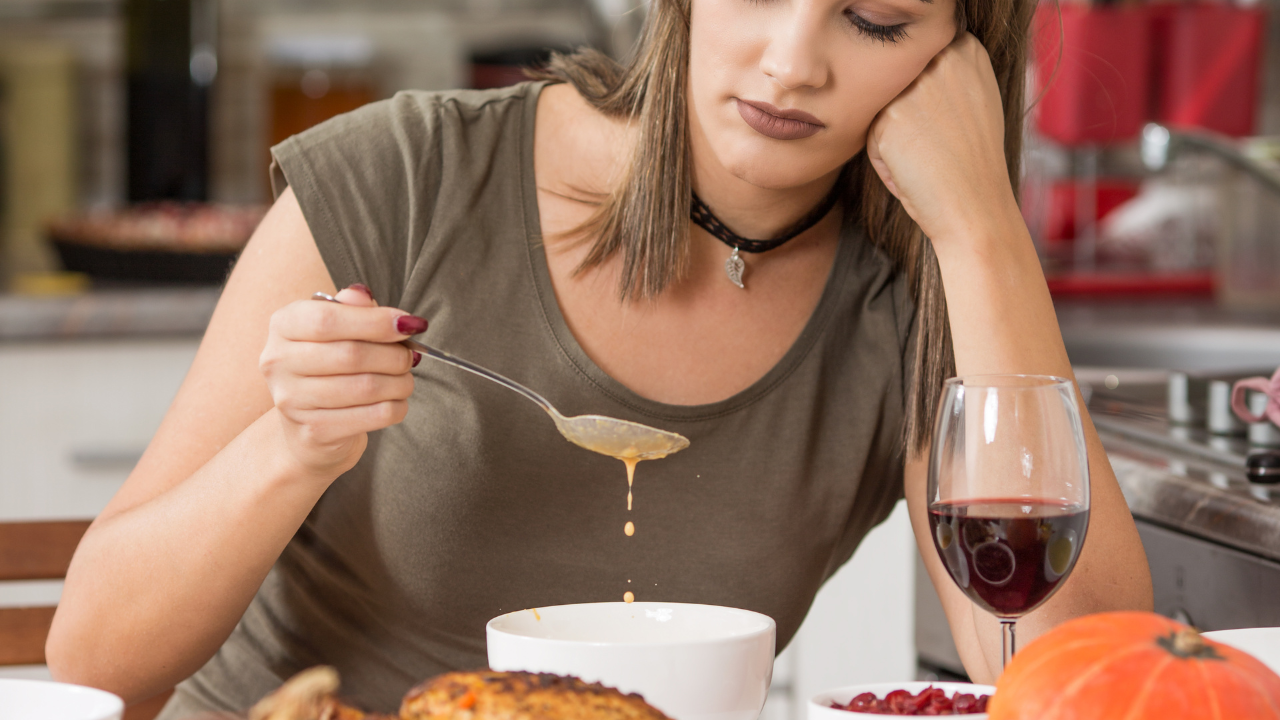The Ultimate Guide to Start Intuitive Eating
DISCLAIMER: Links included in this blog might be affiliate links. Health with Hannah, LLC is a participant in the Amazon Services LLC Associates Program along with other affiliate programs. If you purchase a product or service with the links that I provide I may receive a small commission with no additional charge to you. Thank you for your support!
New to intuitive eating and wanting to learn more? I got you!
If this is your first time here - hello and welcome! My name is Hannah and I am a non-diet dietitian with a mission of helping people ditch the diets and make peace with food.
In this post I will cover what intuitive eating is and who it’s for, I’ll debunk common intuitive eating myths, and I will share some tips for getting started on your intuitive eating journey.
What is intuitive eating?
Intuitive eating is an anti-diet (also referred to as non-diet) approach to eating that was developed in 1995 by two registered dietitians, Evelyn Tribole and Elyse Resch.
Intuitive eating is not a diet. I like to call it a practice or a journey. It is not a set of rules that you must follow and it’s also important to note that you cannot do intuitive eating “wrong”. What a relief, right?
We are all born as intuitive eaters. We are not born tracking calories and measuring the portions of everything we eat. These are learned behaviors - ones that often take us away from our natural instincts.
Our bodies have the innate ability to tell us when to eat, how much to eat, and what to eat. However, due to various reasons such as social influence and diet culture, how we are raised, and health conditions, many of us lose touch with our hunger and fullness signals or we simply stop trusting them. Intuitive eating involves getting back in touch with these internal cues and learning to trust our body again.
Hunger and fullness are key parts of intuitive eating, but there is more to it than eating when you are hungry and stopping when full. Intuitive eating also involves ditching the diets and learning to respect and care for your body, regardless of its size or shape.
There are 10 principles of intuitive eating that revolve around helping you improve your relationship with food and your body.
The 10 principles of intuitive eating
Reject the diet mentality
This principle is all about rejecting the idea of losing weight quickly, easily, and/or permanently. Despite what diet culture says, our bodies are meant to change. Weight loss is not the focus of intuitive eating and it is not a weight loss diet in any way.
This principle involves you getting angry at diet culture. It involves you getting mad that there are diets out there that are trying to manipulate you into losing weight, knowing full well that you are likely going to gain that weight back.
When you start to accept intuitive eating and you still partially believe that there may be some diet around the corner waiting for you that is actually going to be the one that works, that is going to make it very difficult for you to fully adopt the idea of intuitive eating. This principle involves fully rejecting the idea of diets and the diet mentality in order to move on as an intuitive eater.
Learn more about principle 1 here.
Honor your hunger
Simply put, you need to eat enough. Eating as little as possible is not the solution and this is going to backfire. You need to eat enough calories, you need to eat enough carbs, enough protein and fats, enough vitamins and minerals. You need to be eating enough.
Be sure to listen for when your body tells you it is hungry and respond by feeding it. This is going to be a very important step to help you rebuild trust with your body. Your body tells you what it needs and if you don’t respond appropriately, it can be hard to build trust. If you have been dieting for years, it may take time to rebuild this trust and tune back into those hunger and satisfaction cues.
Learn more about principle 2 here.
Make peace with food
Give yourself unconditional permission to eat all foods. This includes any foods that you deem as “bad” or “unhealthy”. You need to truly give yourself permission to eat these (and all) foods.
When you tell yourself that you can’t have those forbidden foods, that only makes you want them more. This leads to you eating past fullness when you finally get the chance to have them.
When you do finally allow yourself to give in to these forbidden foods as you accept intuitive eating, it might be difficult to stop eating them at first. This is normal and expected! Pretty soon, all foods will be equal in your mind once you truly allow them all in moderation and you won’t feel experience less overeating once you trust that you can truly enjoy all foods.
Learn more about principle 3 here.
Challenge the food police
This principle involves saying “NO” to the voices in your head that are telling you that you can’t eat something. Say “NO” to those around you that say you can’t eat something or judge you for eating. If the voice in your head tells you that you are being “bad” for eating a cookie and “good” for eating some broccoli, this principle helps you to challenge that internal dialogue.
If friends, family, and/or coworkers are acting as the food police, it likely is a reflection of their own relationship with food. Don’t let anyone make you feel bad about your food choices.
Learn more about principle 4 here.
Discover the satisfaction factor
Food is so much more than just fuel. We need to eat both for physical satisfaction and for emotional satisfaction. Enjoying delicious food is part of the human experience. We weren’t meant to eat foods that only nourish our bodies, we were also meant to eat food that also nourishes our souls.
Food is culturally meant to bring us together! For me, it is pretty hard to bond with friends and family over a plain salad with no dressing.
People often feel fearful that when they are allowed to enjoy these “fun” foods or “forbidden” foods that they may have a hard time controlling themselves around them. And this may be the case at first, but the more you allow all foods, the less that you are going to be driven to overeat them.
Learn more about principle 5 here.
Feel your fullness
We want to eat to the point of feeling satisfied, not stuffed. This becomes rather difficult when we aren’t sure if/when we are going to get that food again or when we wait to long to eat.
You want to eat to the point where you feel comfortable and you could eat a little bit more, but if you did you would likely feel a tad uncomfortable. This is the feeling of satisfaction that you want to shoot for.
There are times that you will overeat and that is normal. You should not restrict after this or feel guilty.
In terms of hunger, we also don’t want to get too hungry because that makes us more likely to overeat and it makes it hard for our body to trust us when it always feels hungry without getting fed. Try to allow yourself to only get to a point where you feel slightly hungry and then eat to the point of satisfaction.
This takes time to learn to how to not get too full or too hungry! Be sure to eat slow, avoid distractions while eating, maybe put your fork down while eating to assess. If you feel satisfied, it’s okay to stop eating, even if there is food left on your plate. The “clean plate club” is no longer a thing and you don’t have to finish your food if you feel satisfied.
Learn more about principle 6 here.
Cope with your emotions with kindness
It is important to find other ways than with food to cope with emotions (anger, sadness, boredom, etc.). It is normal to cope with food on occasion and you don’t need to restrict or feel guilty if you do emotionally eat once in a while. But food is not going to solve whatever is causing the emotion. Food can be a coping skill, it just shouldn’t be your only coping skill.
Learn more about principle 7 here.
Respect your body
Every single body looks different. If you were to eat the exact same and exercise the exact same as someone, you would still look completely different. We all have very different genetic blueprints.
Get clothes that you feel comfortable in. Don’t try to squeeze into a smaller size just because you feel like it is the “right” size. If you wear a size 9 shoe, do you try to make your feet into a size 6?
You’re allowed to want to change your body and lose weight. If you have been exposed to diet culture (as we all have), it makes sense that you would have these desires. This principle involves learning to respect your body at all the shapes and sizes that it goes through. All bodies deserve dignity.
As for BMI and ideal body weight - they are simply diagnostic tools and they are not meant to tell you what your body weight should be. There really is no way to predict what your ideal body weight is or what your weight should be. But when you are eating properly and moving in ways that feel good, you will settle at the weight you are meant to be at.
Learn more about principle 8 here.
Movement - feel the difference
Exercise in ways that feel good. Don’t exercise to punish yourself. Shift your focus from exercising to lose weight and burn calories to exercising to feel good. If you focus on how you actually feel during a workout rather than what you are getting from it, it is more likely to feel less like a chore and more like something you actually want to do.
Find movement you actually enjoy. If you don’t like running, don’t run! Find a mode of exercise that you actually want to do.
Learn more about principle 9 here.
Honor your health - gentle nutrition
Intuitive eating does not mean that you are going to just eat donuts, pizza, and ice cream all day long because that wouldn’t feel very good. We don’t neglect our health when we adopt intuitive eating. We still are going to eat foods that nourish our bodies and our good for us, but you can still eat foods like cookies and pizza and foods that may not be the best for us physically, but are so good for us mentally. When we allow these foods in moderation, we don’t find ourselves binging on these forbidden foods.
With intuitive eating, don’t strive for perfection. There is no such thing as being a “perfect” eater and there is no “perfect” diet. We need to focus on progress. For example, if you do eat past fullness, take a mental note of what lead up to that moment. Did you get too hungry? Were you on your phone while eating and you couldn’t be as mindful of your satisfaction cues? Look at uncomfortable experiences as a learning opportunity rather than punishing yourself. Remember, you don’t have to eat “perfectly” to be healthy. You are not going to get a nutrient deficiency or become “unhealthy” from one snack, one meal, or even one day of eating. It is all about the big picture and what you are doing most of the time.
Learn more about principle 10 here.
Who is intuitive eating for?
I believe that intuitive eating is for everybody. Yes, everybody. Even if you have a medical condition, food allergy or intolerance, or other dietary restrictions. If you struggle with disordered eating or an eating disorder, working with a dietitian who is trained in intuitive eating can be very helpful on your road to recovery.
Note: intuitive eating may not be appropriate in the early parts of your eating disorder recovery as you may not have true hunger and/or fullness cues to rely on. Follow the plan set by your recovery team.
I do want to note that sometimes the intuitive eating community on social media can feel less than inclusive. It’s not uncommon for intuitive eating content on social media to make it seem like intuitive eating is only for those who are thin. Have you ever seen YouTube thumbnails or TikToks that say something along the lines of “here is how I lost XX pounds with intuitive eating”? Unfortunately, this is an example of diet culture co-opting the language of the intuitive eating and anti-diet space.
I want to take a moment to acknowledge that I am a white, relatively thin, cisgender, straight, financially secure, and able-bodied dietitian. These privileges allow intuitive eating to be more accessible to me. I talk about intuitive eating and HAES frequently on my social media pages and on the podcast that I co-host and I have been guilty of not being inclusive in my anti-diet messaging in the past and I know many with similar privileges who would say the same. I am mentioning this not to shame anti-diet practitioners who may be in the same situation, but simply to get us all thinking about how we portray our messages and create our content.
Using your thin body to sell intuitive eating is a move rooted in diet culture. You’ve likely seen this marketing strategy before via body checks before a full day of eating video (implying that if you eat like them then you will look like them) or with before-and-after photos on a weight loss program’s website. Using your body to sell any kind of nutrition or exercise program is essentially false advertising. Even if we all ate the exact same, we would still look totally different.
If a thin anti-diet Instagrammer is continuously is showing their body, this might leave larger-bodies folks feeling like they don’t fit the bill for intuitive eating. Although it may not be the intention, the outcome is keeping intuitive eating a non-inclusive space.
Intuitive eating dietitians and intuitive eaters themselves are of course allowed to be thin. Body shaming is never acceptable, not matter the body size, and that is not my intention with bringing up this topic of inclusivity. Again, my hope is just that we can all continue to make the anti-diet space a place where everyone feels welcome.
I recommend following a wide array of anti-diet experts. Follow people of different racial and ethnic backgrounds as well as people with different body sizes. While I love that intuitive eating is becoming more mainstream, the information should not just be coming from people with thin privilege.
One last note on the accessibility of intuitive eating - being able to honor hunger and fullness is a much easier feat when you don’t have limited access to food. Those with food insecurity will likely find it challenging to incorporate these principles by the book.
So while I do believe that intuitive eating is for everyone, I also acknowledge that it will look different for every single person. Everyone deserves to have a positive relationship with food and dieting is not the solution to such.
Intuitive eating myths
Myth: Intuitive eating is just "eating whatever you want, whenever you want"
Making peace with food and having unconditional permission to eat is often misunderstood. While you could eat donuts and pizza 24/7, as you become more attuned to your interoceptive awareness, you will notice that it doesn't feel too good to eat that way all the time. As you make peace with food and allow frequent exposure, these "forbidden foods" won't seem so tempting and you are less likely to experience "last supper" style eating.
Myth: Intuitive eating is the "hunger and fullness diet"
Intuitive eating is more than just eating when hungry and stopping when full. There are many moving pieces to hunger and fullness:
Are you stuck in a diet mentality that makes you think you should feel full when you actually aren't?
Have you accepted your body shape or are you convincing yourself that you are full so that you can shrink your body?
Are you feeling physiological hunger or using food as a way to numb emotions?
Have you "shut down" your hunger and fullness cues by years of fad dieting?
Myth: Intuitive eating will help me lose weight
Becoming an intuitive eater requires a weight-neutral approach. Focusing on the number on the scale (an external process) will make it very difficult to tune in to your internal hunger and fullness cues. You may gain weight, lose weight, or maintain the same weight as you find food freedom. Many people experience all three outcomes on their journey.
I’ve got an entire post about what will happen to your weight with intuitive eating. Check it out here.
Myth: Intuitive eating is not evidence based
The first chapter of Intuitive Eating (the book) is called "The Science of Intuitive Eating" and there are numerous studies validating the benefits, characteristics, and processes of Intuitive Eating. We love an evidence based approach!
How to get started with intuitive eating
Intuitive eating can be tough to start on your own, especially if you have been dieting for a long time. I recommend working with a registered dietitian who specializes in the anti-diet approach (like yours truly!) to provide you with structure and guidance on your journey.
I also suggest that you read the Intuitive Eating book, written by the intuitive eating creators themselves.
If you are looking for a free approach, there are tons of intuitive eating professionals who post regular content on social media (just be sure to tread lightly and block those who are promoting the diet culture version of intuitive eating).
Remember, the healing process of intuitive eating will take time. This is a life-long journey. Give yourself plenty of grace as you work towards making peace with food and your body.
More intuitive eating posts
Watch my intuitive eating videos on YouTube
Want more help on your intuitive eating journey?
Join my membership to become part of a community of ex-dieters working towards food freedom and making peace with food so they no longer need to cut out their favorite foods.




















